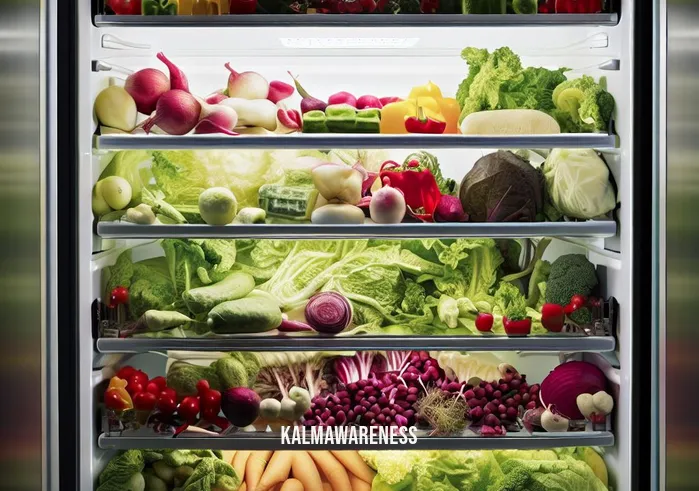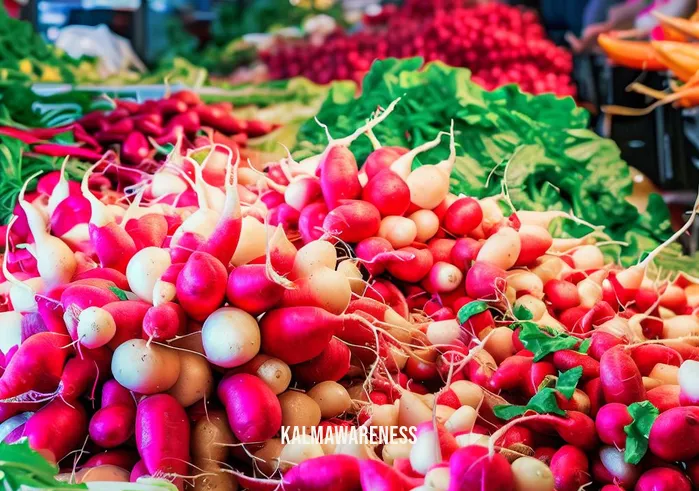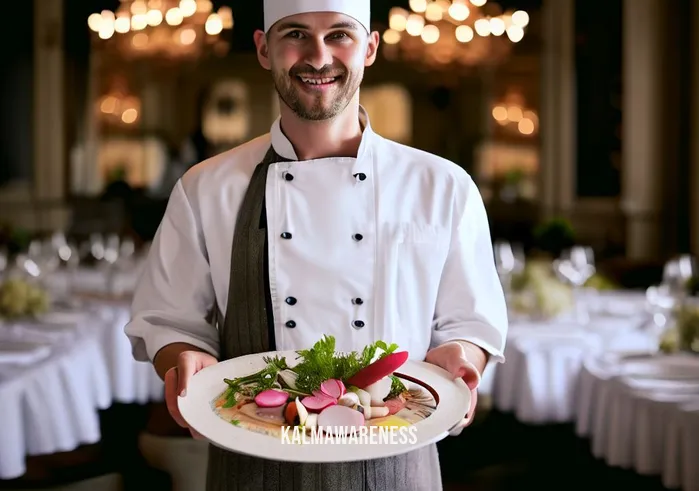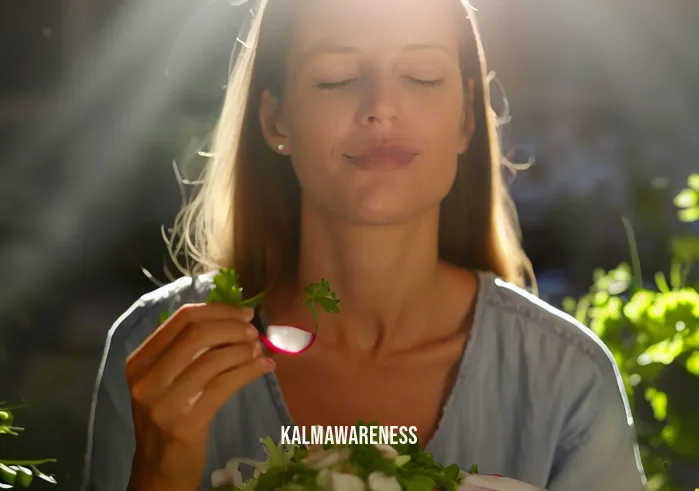Unraveling the Mystery of Radish Craving: A Journey into Mindfulness and Eating Habits
Introduction: The Unusual Urge
Have you ever stopped to think about the intricacies of our eating habits? The quirky desires that seem to pop out of nowhere? Among them, an unexpected contender has emerged in recent conversations: the radish craving. On the surface, it may seem arbitrary, even laughable. But dive deeper, and this peculiar yearning can unravel significant insights into Food, Craving, Mindfulness, Eating, and Healthy Habits.
Radishes: More Than Just a Root Vegetable
Radishes, often relegated to a mere salad component, have taken center stage in this exploration. But what is it about this crunchy, peppery vegetable that has intrigued so many?
- Nutritional Value: Radishes are packed with essential vitamins and minerals.
- Digestive Aid: They promote healthy digestion, thanks to their high fiber content.
- Detoxifying Properties: Radishes are known to purify the blood and detoxify the body.
With these benefits, it’s no wonder that our body might lean towards a sustainable self-care routine that involves incorporating radishes into our diet.
Mindfulness: The Heart of Understanding Our Desires
As we venture deeper into understanding radish craving, the concept of mindfulness emerges as a pivotal tool. Mindful movement and its relation to sleep have shown that being in tune with our body’s needs significantly influences our choices. This is not restricted to movement alone. When we tap into this mindfulness, even while eating, we start to understand the depth of our cravings.
Mindfulness, as defined by experts, involves attaining a peaceful state of mind where thoughts are not occupied by worry. Achieving such a state, especially during our meals, can give us insights into why we crave what we crave. Whether it’s the crispy bite of a radish or the calming taste of chamomile tea, being present in the moment can help us decode our body’s signals.
By now, you might wonder, how does one begin this journey into mindfulness, especially when it’s related to food? The answer might lie in the practices of Rouse Yoga or even techniques as simple as meditation while lying down.
The Role of Meditation in Decoding Cravings
Jack Kornfield, a renowned meditation expert, mentions in his guide for beginners that it’s essential to train our minds to be stronger than our feelings. Through meditation exercises, which often involve focused breathing or even mirror gazing for spiritual benefits, one can attain clarity.
However, meditation isn’t just about achieving enlightenment or understanding our radish cravings. It’s about holistic well-being. From promoting better sleep through gratitude meditation to understanding the profound meaning behind phrases like “how we get deep so fast,” meditation paves the way.
A Glimpse Into the Following Segments
This introductory segment was a foray into understanding the mystery behind radish craving through the lens of mindfulness and meditation. As we delve deeper in the next chapter, we will explore:
- The history and cultural significance of radishes.
- Psychological perspectives on cravings.
- Techniques to enhance mindfulness in our daily routines.
From understanding the judgment of the wise to reaping the benefits of meditation made simple, we will unravel the layers that surround our eating habits.
Intrigued by the journey so far? Let’s dive deeper together. Continue reading as we venture into the roots of radish cravings and the wonders of mindful eating.

The Historical and Cultural Significance of Radish Craving
Radishes in World Cuisine: An Underestimated Delight
As we peel back the layers of our radish cravings, we find that this seemingly humble vegetable has been an essential part of various world cuisines. From the zesty daikons in Asian salads to the peppery bite of French breakfast radishes, these root vegetables have found their way into our hearts and plates. Here’s a brief overview:
- Asia: Used in pickles, salads, and even as a side dish, the radish, especially the daikon variety, has a prominent place in Asian cuisine.
- Europe: Known for its raw consumption in salads and also pickled as a side dish.
- Americas: Often enjoyed raw, sometimes with a dash of salt or baked into savory dishes.
The fact that radishes have been embraced across different cultures indicates a universal appeal. But is there more to this global fondness than meets the eye? How to spell stabilize the cravings we have, especially for something as specific as radishes? Let’s delve further.
Understanding Cravings: More than Just a Whim
At the heart of our exploration is the understanding that craving radishes, or any other food for that matter, isn’t merely about taste. Often, our body’s yearning for a particular food item is an indication of an underlying need.
- Nutritional Deficiency: Our body sometimes signals what it lacks through cravings.
- Emotional Connection: Foods often carry memories or emotions, making us yearn for them during specific moods or situations.
- Cultural Influence: Being surrounded by a culture that prioritizes certain foods can trigger cravings for those items.
Tapping into the mirror gazing spiritual benefits, one can sometimes discern deeper emotions or needs that trigger such cravings. Recognizing the reason behind the urge, especially something as specific as a radish craving, can be an enlightening experience, linking back to our earlier discussions on mindfulness.
A Snapshot: Radish Varieties and Their Benefits
To further appreciate the radish and its allure, let’s examine some popular varieties and what they bring to the table:
| Variety | Taste Profile | Popular Uses |
|---|---|---|
| Daikon | Mildly spicy | Salads, pickles |
| French Breakfast | Crisp and peppery | Eaten raw, salads |
| Watermelon Radish | Sweet and slightly peppery | Salads, garnish |
| Black Radish | Strong and pungent | Grated in salads, pickled |
| Easter Egg | Mild and sweet | Eaten raw, mixed in salads |
This table not only showcases the versatility of radishes but also gives a hint on why our palate might lean towards one or the other based on our individual needs or preferences.
Setting the Stage for What’s Next
As we’ve journeyed through the annals of history and the complex web of human emotions and needs, the radish has proven to be more than just a simple root vegetable. From its widespread culinary use to its potential in indicating our body’s needs or emotional state, our radish cravings have opened a portal to a deeper understanding of ourselves.
The next chapter promises to be even more riveting. How can the practices of teenagers walking or the profound judgment of the wise shed light on our relationship with food? How does the mindful hypnobirthing technique connect with our eating habits? And most importantly, how can we harness this knowledge for a healthier, more attuned life?
Continue reading as we delve even deeper into the world of radish cravings, mindfulness, and the intricate tapestry of our eating habits.

Radish Cravings: Stories of Hope and Inspiration
An Unusual Catalyst for Change
At the core of our exploration into radish cravings lies the potent narrative of hope and inspiration. As we’ve delved into the history, cultural relevance, and emotional undertones of this unique yearning, the focus now shifts to tales that highlight the transformative power of this simple craving.
Touch that body part – this phrase, although initially seeming unrelated, encapsulates the essence of our relationship with food. Just as touch provides a direct connection, understanding, and even healing, so too does our bond with what we consume.
Stories from the Heart
Julia’s Tale: Julia, a 35-year-old teacher, began experiencing strong radish cravings during a particularly stressful period in her life. Initially dismissing it as a fleeting whim, she soon realized that her body was signaling a deeper need for detoxification and balance. Embracing her desire for radishes, Julia incorporated them into her daily meals. Over time, she not only felt healthier but also developed a more mindful approach to her diet, listening to her body’s subtle cues. Her story stands testament to the notion that our cravings, however unconventional, can be the very catalysts for positive change.
Ben’s Connection: Ben grew up in a neighborhood where fresh produce was a luxury. Moving to the city as an adult, he chanced upon a farmer’s market where the vibrant hues of radishes caught his eye. This newfound ‘yearning’ led him to not only explore diverse cuisines but also to champion community gardening. Today, Ben’s initiative helps urban communities access fresh vegetables, ensuring they too can respond to their body’s natural inclinations.
To quote Michael Pollan, “Eat food, not too much, mostly plants.” These narratives showcase how tuning into one’s unique radish-related desires can inspire broader life changes, emphasizing the profound connection between our dietary choices and life trajectories.
Quotations of Resonance
As we reflect on the profound influence of radish cravings, a few poignant quotes come to mind:
Virginia Woolf once said, “One cannot think well, love well, sleep well if one has not dined well.” This quote resonates deeply, reminding us of the importance of listening to our cravings, like those for radishes, as they often hold the key to our overall well-being.
Anthelme Brillat-Savarin remarked, “Tell me what you eat, and I will tell you who you are.” This insight echoes the sentiment of our exploration – that understanding our radish cravings can provide a window into our souls and aspirations.
As M.F.K. Fisher put it, “First we eat, then we do everything else.” Indeed, recognizing and honoring our food cravings can serve as the foundation for leading an inspired and harmonious life.
Drawing from the wisdom of these words and the inspirational tales shared, it becomes evident that our relationship with food, especially our cravings, offers a roadmap to self-discovery, hope, and positive transformation.
The Journey Ahead
Having delved into the myriad dimensions of radish cravings – from its cultural importance to stories of hope and transformation – we are left with a heightened appreciation of this unique yearning. It underscores the importance of embracing and understanding our desires, no matter how unconventional they might seem.
In the next chapter, we’ll explore the science behind cravings. Why do we yearn for certain foods like radishes? What neurological and physiological processes come into play? And how can insights from mindful hypnobirthing techniques provide clarity on our food desires?
Prepare to embark on a captivating journey into the science and soul of our eating habits. Continue reading to delve even deeper into the world of cravings and the profound insights they offer.

The Science Behind Radish Craving: An Analytical Dive
Why Radishes? The Physiological Perspective
As we’ve navigated through the cultural, emotional, and inspirational facets of radish cravings, a pressing question arises: What is it about radishes, on a physiological level, that draws us in? To understand this, let’s break down the components:
Nutritional Composition:
- Radishes are a good source of Vitamin C, which aids in tissue repair and immune function.
- They contain potassium, essential for heart health and muscle function.
- With a high water content, radishes help in hydration and detoxification.
Digestive Benefits:
- Radishes are rich in fiber, promoting healthy bowel movements.
- Their natural compounds can aid in bile production, assisting digestion.
Detoxifying Properties:
- Radishes have been known to purify blood.
- Their antioxidant properties help combat oxidative stress, supporting liver function.
Through these bullet points, it becomes clear that radishes offer a wealth of benefits, making our body’s inclination towards them understandable from a physiological perspective.
Decoding the Neurological Aspect of Cravings
But beyond the physiological aspect, there’s a neurological dimension to our cravings. Here’s a list detailing this intricate relationship:
- Brain Chemistry: Certain foods, like radishes, can stimulate the release of neurotransmitters like dopamine, which are associated with pleasure and reward.
- Memory and Association: Our brain associates foods with past experiences. If radishes were part of a positive memory, the brain might yearn for them during similar emotional states.
- Sensory Stimulation: The crunchy texture of radishes can provide sensory pleasure, which the brain might seek out.
- Body’s Natural Alarm: Craving a specific food could be the brain’s way of signaling a deficiency or need.
Diving into the element of some meditation exercises, we find that the mind’s awareness can be enhanced, leading to a clearer understanding of such neurological cues.
Real-Life Implications of Understanding Cravings
Understanding the science behind our cravings can have practical applications:
- Informed Dietary Choices: Knowing why we crave certain foods can help us make healthier dietary decisions.
- Emotional Well-being: Recognizing the emotional triggers for cravings can lead to better mental health management.
- Mindful Eating: With heightened awareness, we can adopt a more mindful approach to eating, as elucidated in meditation made simple.
What Awaits in the Conclusion
Having delved into the multifaceted world of radish cravings, from historical tales to the underlying science, we’ve amassed a treasure trove of insights. But our journey is far from over. In the next chapter, we will stitch together all these threads, weaving a cohesive tapestry that not only celebrates the humble radish but also sheds light on the broader implications of understanding our cravings.
Continue reading as we culminate this enlightening exploration, drawing meaningful conclusions from our deep dive into the realm of radish cravings and the mysteries of the human psyche.

Radish Craving: A Culinary Journey of Self-Discovery
Reflecting on Our Voyage
As we draw the curtains on our exploration into the intriguing world of radish cravings, it’s an opportune moment to pause, reflect, and savor the insights gleaned. This seemingly humble root vegetable, with its crisp bite and peppery undertones, has served as a lens through which we’ve examined culinary traditions, emotional landscapes, physiological cues, and the very essence of mindfulness.
From its historical significance in global cuisines to the neurological intricacies of our cravings, we’ve unraveled the multifaceted relationship between humans and this vibrant vegetable. Along the way, we’ve been reminded of the age-old wisdom, underscored by the judgment of the wise, that understanding our desires and cravings is paramount to leading a balanced and harmonious life.
Lessons Learned and The Road Ahead
Our journey has imparted several invaluable lessons:
- Tuning into the Body: Our cravings, including the desire for radishes, often harbor deeper messages from our body.
- Embracing Mindfulness: By being present in the moment and truly savoring our food, we not only nourish our bodies but also our souls.
- The Power of Curiosity: Delving into the ‘why’ behind our cravings can lead to broader insights about our health, emotions, and cultural influences.
A Heartfelt Thank You and A Call to Action
To all our devoted readers, a heartfelt thank you for accompanying us on this enlightening voyage. Your curiosity and zest for knowledge have been the driving force behind our deep dives into such unique topics.
If radish cravings have piqued your interest, we urge you to explore more content within our magazine. Whether it’s understanding the nuances of how we get deep so fast or the techniques of one for each blessed day, there’s a treasure trove of wisdom awaiting you. For those who’d like a refresher or deeper understanding, feel free to revisit the earlier chapters to reinforce your insights.
Concluding on a Bright Note
In the tapestry of life, it’s often the simplest threads, like a craving for radishes, that add the most color and texture. As we conclude, let’s embrace our cravings, not just as fleeting desires, but as signposts pointing towards deeper needs, memories, and aspirations.
Stay curious, stay hungry, and remember, every bite, every craving, has a story to tell.
Until next time, happy eating, and here’s to many more culinary adventures ahead!





